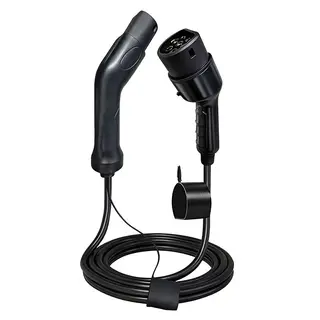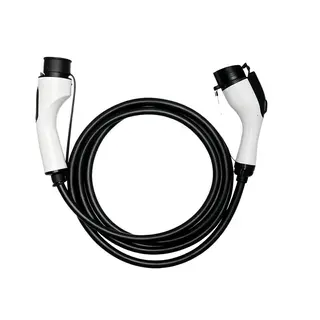In today's era of green transportation, electric vehicles have become the preferred choice for many people's daily travel. However, the safe use of electric vehicles, especially during charging, is often overlooked. According to statistics, more than half of electric vehicle fires occur during nighttime charging, a time when people are usually asleep and it is difficult to detect hazards promptly. Therefore, understanding and following correct charging safety precautions can not only extend the lifespan of the electric vehicle battery but also effectively prevent fires and other dangerous incidents. Today, let us take an in-depth look at the matters related to electric vehicle charging.
The charging duration of an electric vehicle is not fixed and can be affected by the seasons. Generally, charging in winter requires 7–8 hours, while in summer it takes 5–6 hours. This is because different temperatures in different seasons affect the chemical reaction speed in the battery. In cold winter, the battery activity is relatively low, and the charging speed slows down; in hot summer, battery activity is higher, and charging is relatively faster. If the charging time is too long, it can easily cause the battery to catch fire or explode, so it is essential to follow the instructions in the manual and avoid prolonged charging.
Using the original charger for charging is a key step to ensure safe charging of the electric vehicle. The original charger is specifically designed according to the characteristics of the electric vehicle battery, providing suitable current and voltage, ensuring uniform charging, and preventing undercharging or false full conditions. Using other chargers, due to different current and voltage levels, may lead to uneven charging, which not only affects battery life but also may pose safety risks.
A proper charging environment can not only significantly improve charging efficiency but also effectively reduce safety risks and ensure the stable operation of the electric vehicle.
When charging the vehicle, it is recommended to charge outdoors or in a dedicated charging shelter. Indoor spaces often contain many flammable materials, and once a fire occurs, it can easily lead to a larger fire. Outdoors or in a well-ventilated charging shelter, even if an accident occurs, it can be detected and handled in time. Additionally, avoid charging inside a residence, especially at night when people are asleep and fires are difficult to detect. For electric vehicles, choosing a safe charging environment is extremely important.
Do not charge outdoors on rainy days. Although modern charging piles and charging stations are designed to be waterproof and insulated, charging during rain still carries significant risks. Rainwater may seep into the charging interface, causing short circuits or other electrical faults. Similarly, in high-temperature weather, avoid outdoor charging. High temperatures can raise the battery temperature, affect battery performance and lifespan, and may even trigger spontaneous combustion. Therefore, under special weather conditions, choosing a suitable charging environment is critical. For electric vehicle owners, this is particularly important because electric vehicle batteries are more sensitive to ambient temperature.
We also need to pay attention to specific details during charging. These details may seem minor but can have a significant impact on the battery lifespan and charging safety. Next, let us delve into several key details to ensure that every charging session is safe and efficient.
When the battery level drops to about one-third, it should be charged in a timely manner. Frequent small charging actions, though seemingly convenient, can prematurely consume the charge-discharge cycles and shorten battery life. However, there is no need to worry excessively. China has mandatory requirements for power battery lifespan, which must exceed 1,000 cycles. Taking an electric vehicle with a 500 km range as an example, 1,000 charge-discharge cycles mean the vehicle can travel up to 500,000 km. Normally, a private car in its lifecycle will only reach 200,000–300,000 km. Therefore, normal battery degradation can be considered negligible.
After charging, always remember to unplug the charging gun. Whether it is the charging gun or plug, remove it gently to avoid pulling forcefully. Pulling the charging gun forcefully may damage the vehicle's charging system. In addition, after charging, first unplug the vehicle-side plug, then the wall-mounted charger plug. This correct sequence can prevent current backflow from damaging the vehicle or charger.
Some EV owners may use flying or temporary cable setups for charging, which pose significant safety hazards. Flying cable charging is prone to fire hazards in sudden weather changes. The wiring may be damaged by wind, rain, or animal bites, causing short circuits and self-combustion, posing threats to personal and others' life and property safety. For electric vehicle owners, avoiding flying cable charging is an important safety measure.
Grounding devices are mainly used to address situations where no grounding wire exists. Charging without a grounding wire carries safety risks; the circuit may short-circuit, and the vehicle body may conduct current, causing electric shock. Therefore, using a grounding device is essential when charging in environments without grounding. Ensuring grounding safety is very important for EV charging.
During charging, the battery operates under high current and high voltage. Even though the vehicle may have extremely high charging safety, risks still exist. Therefore, avoid staying inside the vehicle or lingering nearby. At the same time, monitor for abnormal heat generation, especially near connectors and the charger. If detected, stop charging immediately and inspect. This is particularly important for electric vehicle owners because EV batteries are more sensitive during charging.
Good maintenance habits can effectively extend battery life, improve charging efficiency, and ensure long-term stable operation of the electric vehicle. Next, we will explore how to properly maintain the battery and charging system to ensure safety and performance.
Before charging, ensure the charging pile and your electric vehicle's charging interface are compatible. Standardized interfaces such as Type 1 (J1772) or Type 2 are compatible with most models, but detailed inspection is still necessary. Additionally, ensure the cable is not damaged and avoid placing objects on or driving over it. If the cable is damaged or aged, it should be replaced promptly to avoid short circuits or other electrical faults.
Use charging stations with high recognition and good reviews whenever possible. Their equipment and services are more reliable. Reputable stations perform regular maintenance and inspections to ensure safe and efficient charging. Some irregular stations may have problematic equipment, affecting charging efficiency and potentially damaging the vehicle's battery and charging system. Choosing reputable stations is an important safety measure for electric vehicle owners.
Read your vehicle manual to understand the recommended charging method. Different vehicles may have different charging requirements; some recommend slow charging while others allow fast charging. Understanding your vehicle's charging requirements can better protect the battery and extend its lifespan. Reading the manual is an important step to ensure charging safety.
Regularly inspect the EV battery and charging system to ensure proper operation. Batteries should not be overcharged or over-discharged. Overcharging and deep discharging reduce battery lifespan. Any device using a battery cannot undergo over-discharge, and pure electric vehicles are no exception. Although the battery pack has protective systems, frequently driving the car to "red light" levels will affect battery life. Also, charging should be stopped immediately when full, similar to mobile phone charging.
When charging, turn off devices such as audio or air conditioning. Using power while charging accelerates battery degradation and generates heat. Just as fuel vehicles turn off the engine while refueling, turning off your EV is a good habit. You may even rest in a nearby café, preparing for the next trip. Turning off in-vehicle power is an important safety measure for EV owners.
Loose 220V power plugs or oxidized contact surfaces of charger output plugs can lead to overheating. Prolonged overheating can cause short circuits or poor contact, damaging the charger and battery and resulting in unnecessary losses. When such conditions are detected, remove oxides or replace the connector promptly. Ensuring the safety of charging plugs is crucial for EV charging.
After understanding the key points for maintaining the battery and charging system, we also need to pay attention to certain special charging conditions.
For a new battery, the first charging session must be long to fully charge the battery. During production, new batteries may contain residual chemicals that require long charging to activate the battery's activity, ensuring normal operation. Generally, the first charge can be slightly longer than usual but should not exceed 12 hours. First charging is especially important for new EV batteries to ensure performance and lifespan.
If the vehicle is unused for an extended period, charge it at least once per month. This protects the battery and extends its lifespan. Batteries slowly discharge when idle, and prolonged inactivity without charging can damage the battery. Regular top-up charging is essential.
Avoid exposing the vehicle to high temperatures, and do not charge in such conditions. EV batteries operate best in 0–40°C. Charging in extreme heat raises battery temperature and may cause spontaneous combustion. During hot weather, park in shaded areas to charge. Avoiding high-temperature charging is an important measure to ensure battery safety.
Electric vehicle charging safety is a matter that cannot be ignored. By reasonably controlling charging duration, choosing suitable charging equipment, paying attention to the charging environment, monitoring details during charging, and regularly maintaining batteries and the charging system, we can effectively extend battery life while preventing fires and other dangerous incidents. Every electric vehicle owner should develop good charging habits, travel safely, and enjoy the convenience and benefits of green transportation.



